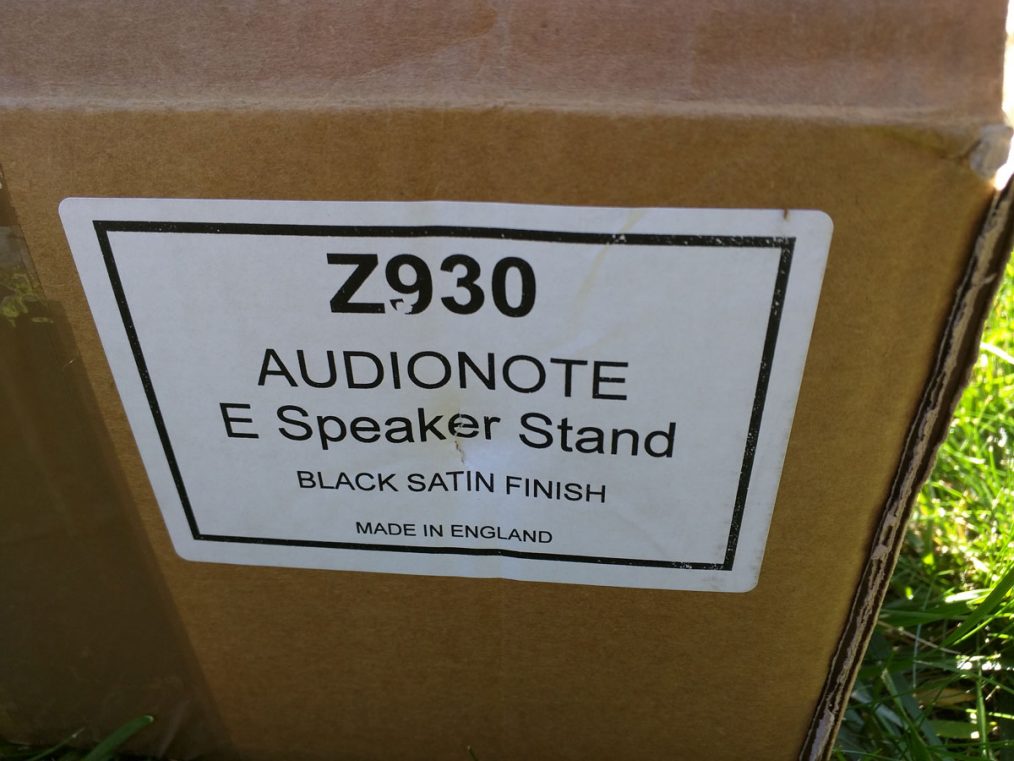
Filling Audio Note AN-E loudspeaker stands with sand
I stumbled across Neli filling Audio Note AN-E loudspeaker stands with sand and I decided to take some photos [and hold the funnel :-/].
This time we used fish aquarium sand instead of play sand [aka sandbox or beach sand, which clumps up due to moisture. Good for building sand castles, not so good for filling equipment racks and speaker stands]. Play sand works fine in an arid environment; here near the bay, not so much.
We used most of this 20 lb bag of ‘aquatic substrate’ [aquarium sand].
The all-important pail. About 2 lbs of sand was poured into the bucket from the bag of sand, then decanted into each leg as we went along.
You would think this radiator funnel’s mouth would be too big, but it worked fine. The sand is so fine and dry, it runs into the stand legs like water.
The directions on how to assemble the stands.
We don’t use the upward facing spikes and no one else uses them and suggest you do not either. We sometimes use soft HRS Nimbus Couplers between the speaker and the stand [increases resolution, lowers authority – and makes positioning during setup easier], or a washcloth [makes positioning easier], or blu tack [recommended by the factory – adds authority, makes adjusting positioning more difficult].
Each leg is filled with sand through the larger hole you see here.
All the legs are filled with sand. A few grains of sand got lost on their way into a leg. Neli was embarrassed that we spilled so many [uncountably few if you ask me] and the first stand *did* go better.
We used this solder sucker to blow sand out of the threads where the stand will be bolted on to its top [actually bottom] plate.
Time to screw in the bolts and add the spikes and away we go 🙂 The spoon wasn’t used for much after I convinced Neli to just pour the bucket of sand directly into the funnel which went a lot faster [hence the reason I was holding the funnel and not taking photos at those times].



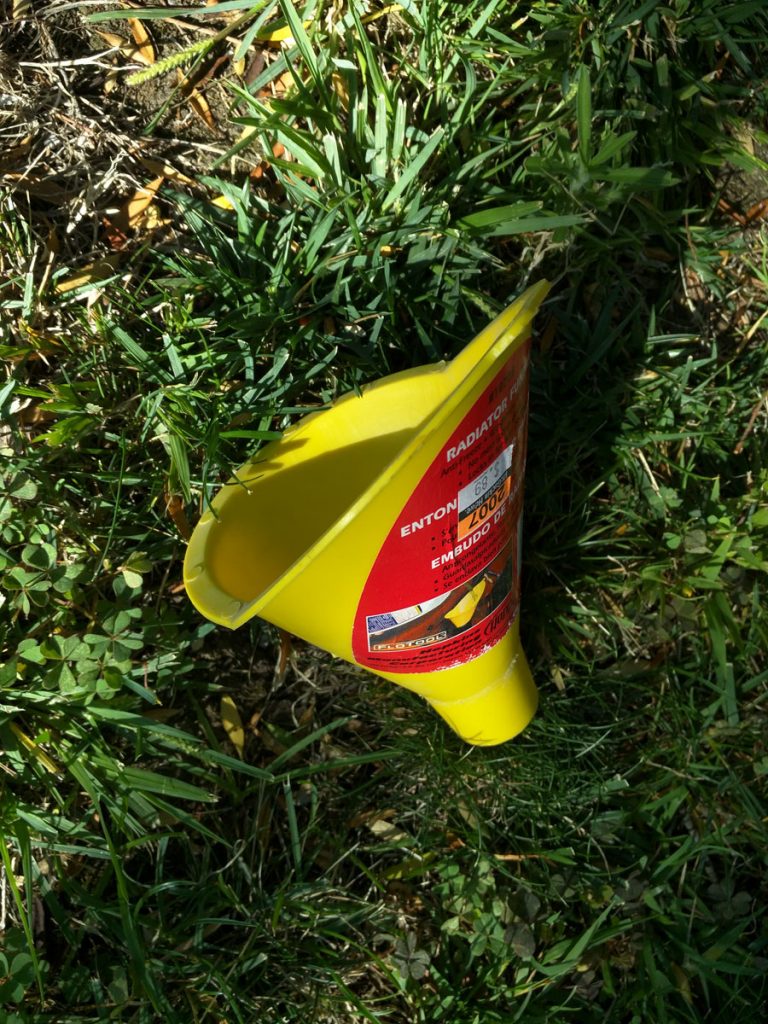
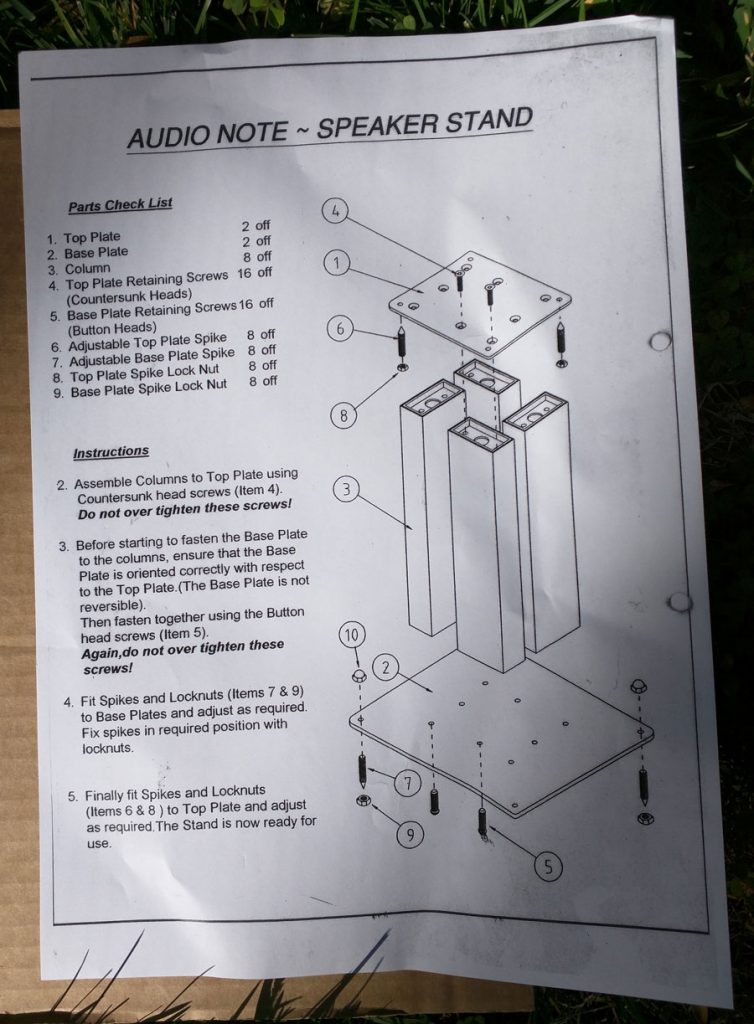
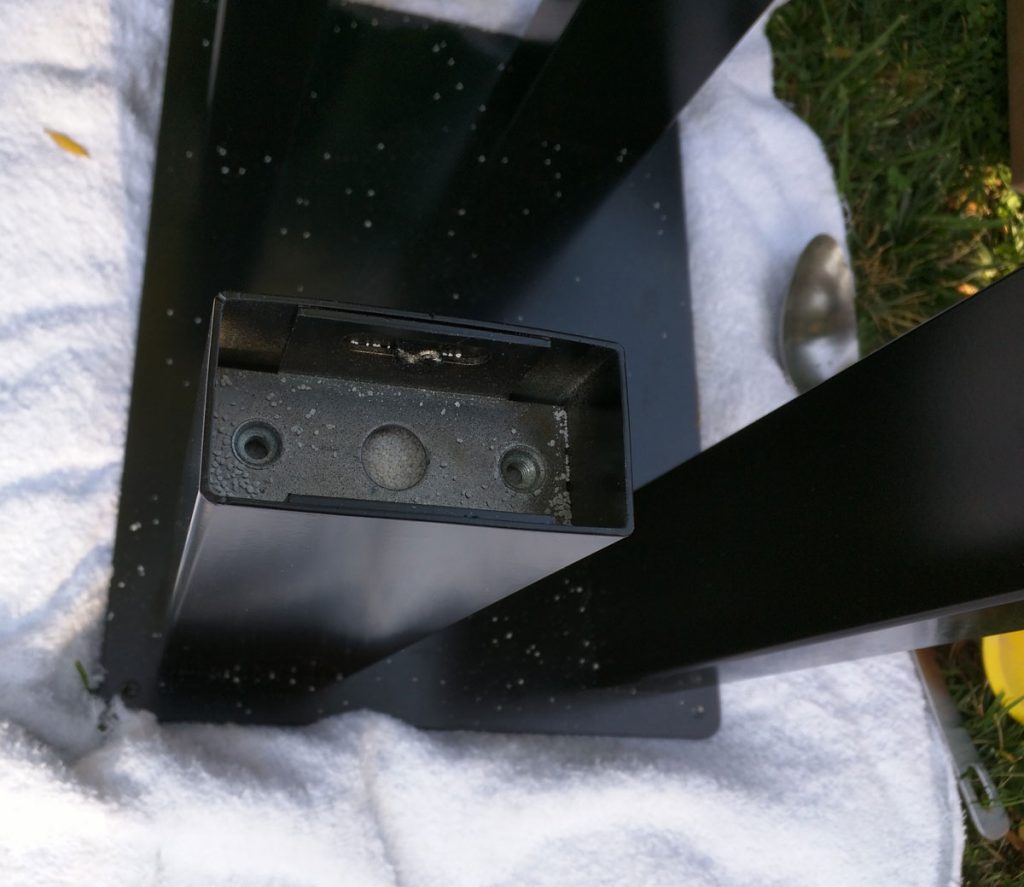
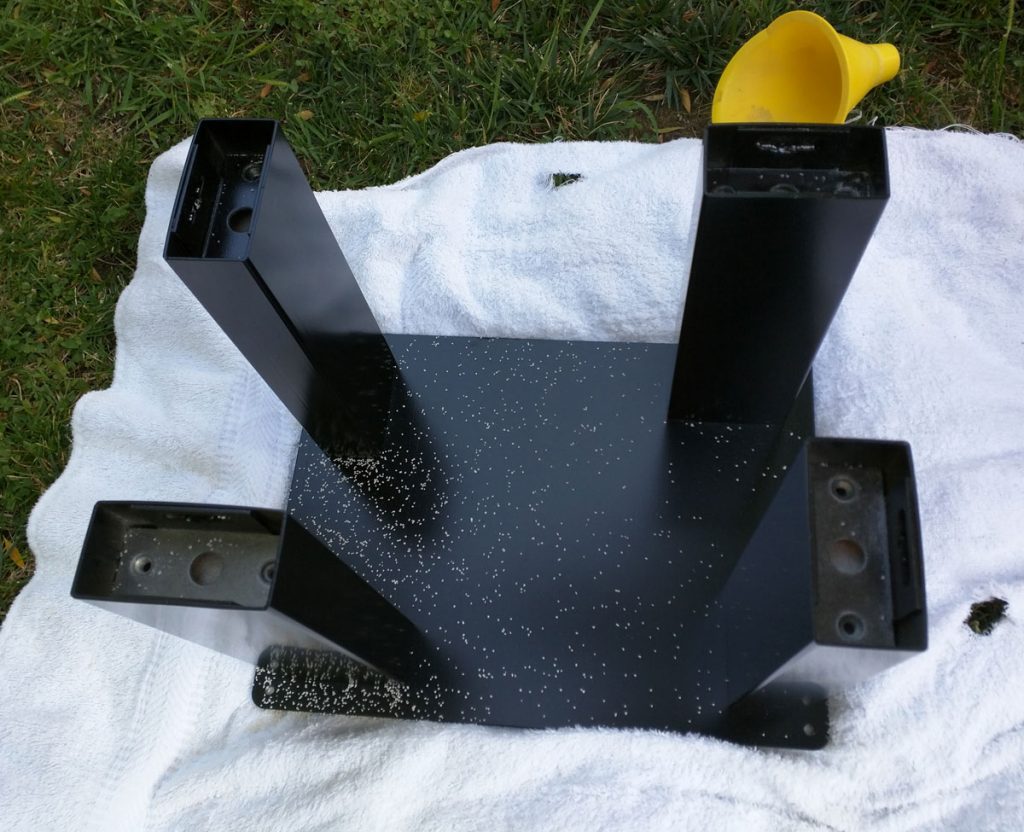
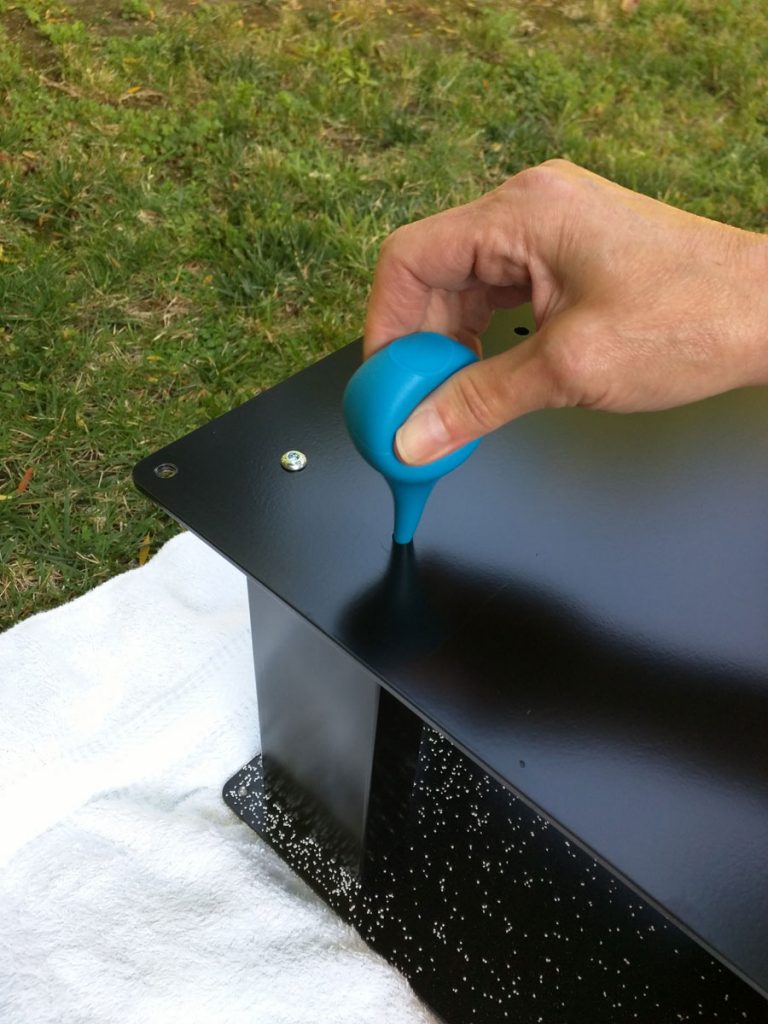

Great tip guys. My dealer advocates unfilled stands but I tried this and like the sonic improvement. Cheers